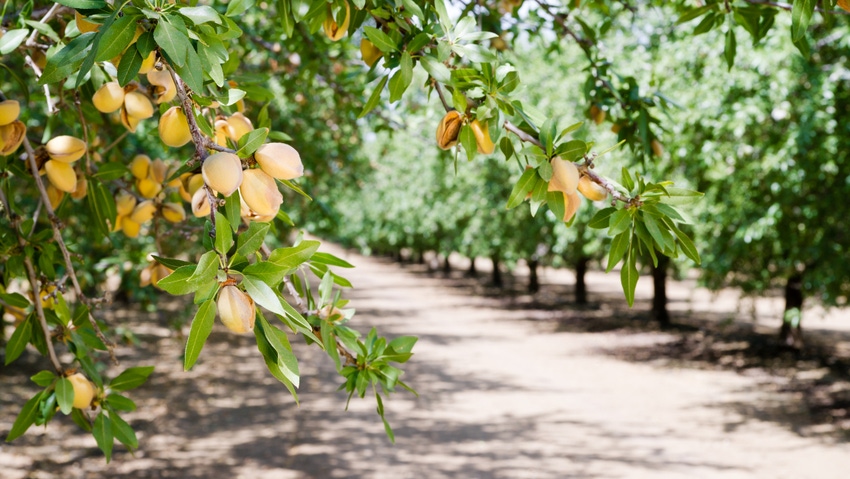September 14, 2016

A California delegation including leaders of the state’s almond industry traveled back to the future recently with a visit to Israel where modern drip irrigation systems were introduced at a desert kibbutz in the 1960s.
It appears the Israelis have more to share with those looking to save and reuse water while meeting climate challenges, judging from comments by Helm almond grower Don Cameron with Terranova Farms and Bob Curtis, director of agricultural affairs with the Almond Board of California.
Curtis and Cameron were part of the 18-member delegation led by California Department of Food and Agriculture Secretary Karen Ross. She says California can learn plenty from Israel’s technological innovations, efficient irrigation, recycled water practices, and plant breeding for drought conditions and salinity.
The delegation’s travels included a visit to Netafim, the irrigation technology company in the Negev Desert founded in 1965 by drip system creator Simcha Blass and the Kibbutz Halzerim.
The company also does business in California, where more than 70 percent of almond growers now use drip and micro sprinkler irrigation, reducing the water needed to grow almonds by 33 percent in the past 20 years.
The delegates also visited Rootility, a startup plant breeding company that developed a new way to give plants heartier root systems. It accomplishes this with a condition simulation system focused on improving a plant’s resilience to extreme temperature, drought, and salinity.
The idea is that the better the plant’s roots then the better it can use water and nutrients which improves resistance to stressful conditions.
Cameron said Rootility is also working with Lucero Farms, a Morningstar company that produces processing tomatoes in Los Banos.
Cameron said a visit to the kibbutz was in some ways “like stepping back in time.” At the same time, the visitors found every indication that innovators there are more than one step into the future.
For example, Cameron said it was eye-opening to visit a jojoba planting, a Netafim plantation that is 14-years old and has an original subsurface drip system which has performed with few problems and no replacements.
He believes the idea of subsurface drip could work in almonds. Most almonds are grown with above-ground drip, but Cameron said it could result in a cleaner floor for harvesting. Subsurface drip is more commonly used in vegetable crops.
“There would be less evaporation because there’s not a wetting surface,” he said. “And weeds don’t develop.”
He added that above-ground drip sometimes gets caught in equipment passing through an orchard.
“A disadvantage is that you can’t see the water coming out,” Cameron said. “But infrared photos from the air can spot a dry area. We hire a company to fly our ranch already to measure water stress and plant mass.”
Cameron said there was some interest years ago in California related to growing jojoba, a bush-like plant that resembles a high density olive tree. But that has abated. Jojoba berries are pressed for oil used in cosmetics as a botanical for many personal care products.
Curtis said the delegation visit clearly demonstrated that the farmers in California have much in common with their counterparts in Israel and can work together to meet water and climate changes.
In a blog pasted after the visit to Israel, Secretary Ross said innovation and technology have helped Israel move from water scarcity to water security. She said this is due largely to a focus on using recycled water for irrigation on all crops.
Ross says about 85 percent of the country’s wastewater is recycled for agricultural use, compared to just 9.5 percent in California.
“The country is able to produce most of the food it requires to feed its citizens, yet its per capita water use is one one-third of California’s,” the Secretary says.
Cameron said he was surprised the country is “water independent.” He explained that, as in California, considerable water moves north to south, in this case from the Sea of Galilee southward, adding that he was also surprised that the body of water is “a large fresh water lake.”
He also learned there are seven major desalination plants along the country’s coastline.
Cameron and other members of the delegation said they saw a lot of purple pipe, an international indicator that it is channeling water that has been treated, and then recycled.
“We need to look at every source we have, we have to use any water we have,” he said.
Terranova Ranch is a highly diversified farming operation including almonds, onions, canning tomatoes, carrots, and wine grapes.
You May Also Like




